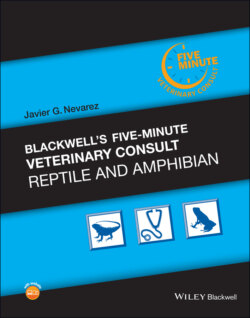Читать книгу Blackwell's Five-Minute Veterinary Consult: Reptile and Amphibian - Javier G. Nevarez - Страница 68
Radiometers
ОглавлениеUVB irradiance cab be measured using a hand‐held radiometer. While expensive (approximately $250.00) these units are available to the general public. Their accuracy has been questioned, but they remain a good tool. A radiometer can be used to measure UVB irradiance of a bulb at any distance to determine how much UVB is being emitted and to record the decay of transmission over time. For example a 5% linear fluorescent bulb may emit 25 μW/cm2 at 12 inches when first purchased but, after 6 months, the irradiance at 12 inches may have decreased to 12 μW/cm2. While this may still be acceptable exposure, it certainly indicates decrease in the bulb’s effectiveness over time. This decay is normal but if one desires to provide a more constant UVB exposure year round, it may be time to purchase a new bulb. They can also be used to evaluate the effect of the screen or mesh cover on the effectiveness of a bulb to help clients select the most appropriate bulb for their setup. Some newer radiometers measure ultraviolet index providing scale from minimum to very high while others provide readout based on the Ferguson zones to help determine the UVB exposure. These radiometers are advertised as being able to measure the appropriate UVB dose for vitamin D3 synthesis although that claim has not been verified. Most amphibians should be exposed to a Ferguson zone of 1 or 2 maximum and no higher.
